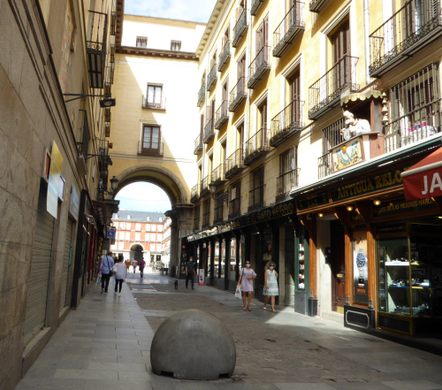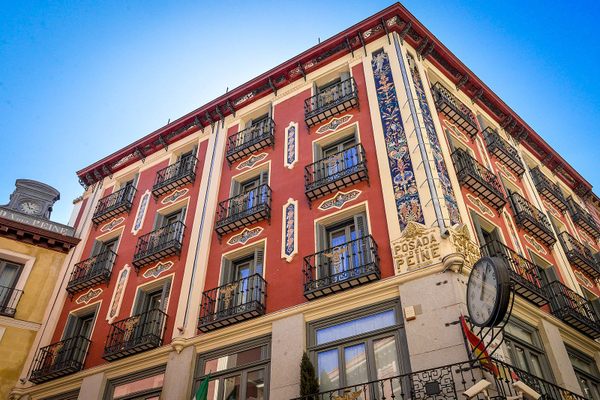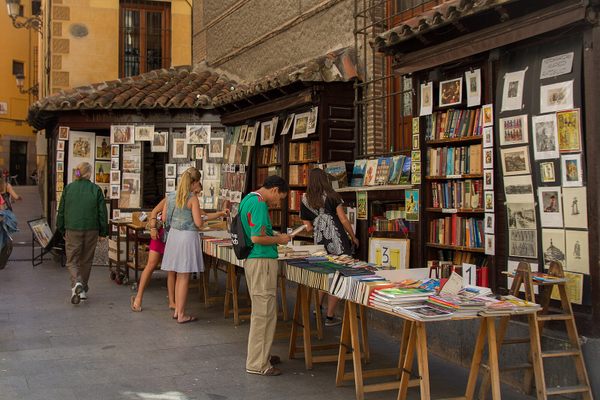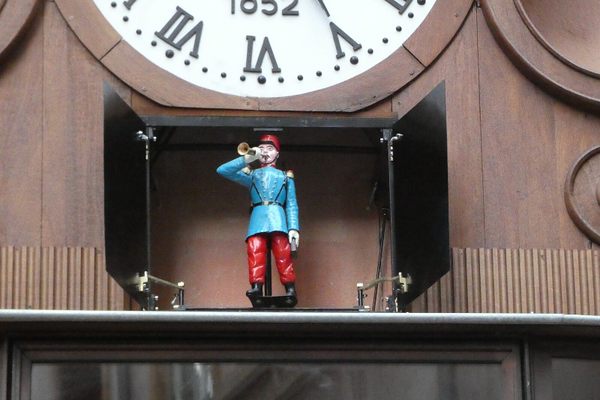Salt Street Watchmaker
An automaton perched above an classic clock and watch store
A nameless watchmaker keeps an eye on Madrid’s Calle de la Sal (Salt Street), less than a block from the Plaza Mayor. He’s only sort-of-nameless. People call him the Salt Street Watchmaker.
He’s an automaton, perched on a balcony over an old clock and watch store with a carillon, Antigua Relojeria. He’s a become a favorite character of locals and visitors alike, as people stop underneath him and every half-hour to watch him come to life to work on his timepiece. Sometimes he even moves a little between those times; staying still must be boring even for a mechanical man. The music that plays for him is “Madrid” from a traditional Madrid zarzuela (operetta), with lyrics that literally sing the praises of the city.
The watchmaker was created in 2010, following the design of Spanish writer and cartoonist Antonio Mingote (1919–2012). His signature is found on the lower right corner of the sundial behind the watchmaker. In addition to the sundial, he has a cuckoo clock and an hourglass: a miniature history lesson in timekeeping.
The store underneath him is one of Madrid’s traditional establishments, recognized by an initiative of Madrid’s Chamber of Commerce as among the city’s stores, hotels, and restaurants that are at least 100 years old. Like most of those establishments, the clock and watch store has a plaque in the sidewalk with its name and year it was founded, 1880. (Alas, some of these traditional establishments have closed, but the plaques remain.)
Like many streets in the area, Salt Street was named for a specific kind of business, in this case salt-sellers, a business that was important enough in early Madrid to have its own street right next to the commercial area of the Plaza Mayor. Other nearby streets are named for button-makers, spinners, embroiderers, and, a bit farther away due to potential fire hazards, can be found the knife-makers, tin-workers, and dyers streets.
Directly across from the clock store is a building with murals in what should be its windows: paintings by Mingote, done in 2001, when street was remodeled. The paintings are based on the novel Fortunata y Jacinta (1887) by Spanish writer Benito Pérez Galdós. Part of the novel takes place on this street and Mingote used that idea to show the typical demographics of a late-19th-century apartment building.
Next time you are in Madrid near the Plaza Mayor, check your watch, and if you are near the hour or half-hour, head over to watch the watchmaker do his thing. You’ll probably walk away with smile and humming “Madrid.”





















Follow us on Twitter to get the latest on the world's hidden wonders.
Like us on Facebook to get the latest on the world's hidden wonders.
Follow us on Twitter Like us on Facebook